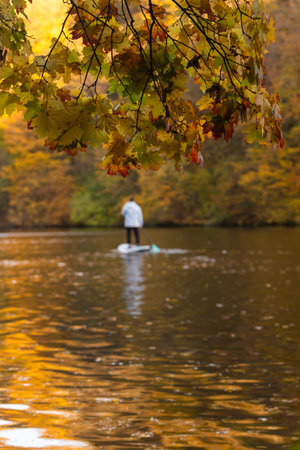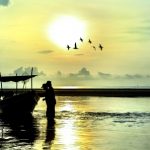1. Understanding the Walleye’s Fall Behavior
As autumn settles in and the air turns crisp, walleye anglers across the U.S. know it’s time to dust off their gear for one of the most exciting seasons on the water. But what makes fall such a prime time for catching walleye? The answer lies in how dropping temperatures and shorter daylight hours trigger dramatic changes in walleye behavior. When summer starts fading, water temperatures begin to cool, signaling to walleye that it’s time to feed aggressively in preparation for winter. This natural instinct is driven by biology—walleye sense the coming scarcity of food, so they ramp up their feeding patterns, often becoming less selective and more willing to chase down lures or live bait. As days get shorter, these fish move from deep summer haunts toward shallower waters and transitional zones where prey is abundant. Understanding these seasonal movements—and the science behind them—can transform your fall fishing game. By tuning into nature’s cues, you’ll not only connect with more fish but also experience the unique rhythm of autumn on America’s lakes and rivers.
2. Why Autumn Waters Offer Unique Opportunity
When fall rolls around, something magical happens beneath the water’s surface that makes this season a goldmine for walleye anglers. Cooler temperatures signal both walleye and baitfish to start moving, creating a dynamic environment that’s ripe for fishing success. As the days grow shorter and the water temperature drops, walleye become more active during daylight hours—especially around dawn and dusk—making them easier to target without those all-night marathons.
The migration of baitfish is one of autumn’s standout features. Species like shad and minnows gather in large schools near shorelines, creek mouths, or main lake points as they prepare for winter. Walleye follow this food source closely, often stacking up in predictable areas where anglers can intercept them. The table below highlights how these factors come together to create prime conditions:
| Autumn Factor | Walleye Behavior | How It Helps Anglers |
|---|---|---|
| Cooling Water Temperatures | Increased daytime activity, move shallower | Easier to locate walleye at accessible depths |
| Baitfish Migration | Follow schools to concentrated spots | Target hotspots like points and coves |
| Changing Light Conditions | Feed more aggressively at low light | Productive morning/evening bites |
Another advantage of fall is the clarity and quality of light. With the sun lower in the sky and less intense than during summer, walleye feel more comfortable venturing into shallower waters without fear of predators. This means you can cast closer to shore or structure—think rocky outcrops, weed edges, or submerged timber—and still find trophy-sized fish patrolling for an easy meal.
In short, autumn brings together all the right ingredients: accessible locations, concentrated baitfish, and active walleye that are eager to bulk up before winter sets in. For anyone passionate about chasing these golden-eyed predators, there’s truly no better time than fall to get on the water and enjoy some classic American fishing action.

3. Best Locations to Target Walleye in Fall
As autumn paints the landscape with gold and crimson, walleye instincts kick into high gear, driving these prized fish to specific hotspots across American lakes and rivers. Understanding where walleye gather during the fall is key for anglers looking to take advantage of this seasonal bonanza. River mouths are classic locations as cooling water temperatures send baitfish downstream, attracting hungry walleye eager to bulk up before winter. These flowing entry points become underwater buffets, especially at dawn and dusk when walleye feed most actively.
Rocky points are another prime zone during fall. Walleye cruise these structure-rich areas, hunting for prey that seek shelter among the rocks. The combination of depth changes and access to open water makes rocky points a magnet for both baitfish and predators alike. Don’t overlook weed edges either—these transitional zones between dense vegetation and open water offer cover and ambush spots for walleye as they stalk their next meal.
Across America’s heartland lakes and famed northern waterways, targeting these key locations can make all the difference between an empty cooler and a memorable day on the water. Whether you’re casting from shore or working your way along with a boat, focusing your efforts on river mouths, rocky points, and weed lines will put you right in the middle of fall’s walleye action.
4. Go-To Baits and Presentations
When autumn sets in, American anglers know it’s time to break out their tried-and-true walleye lures. Fall is all about dialing in on the perfect bait and mastering the right presentation—walleye are feeding aggressively to bulk up for winter, but they can still be picky about what they bite. Below, we’ll walk through favorite fall lures used across the country and share some effective techniques that locals swear by for maximizing your chances when targeting trophy walleye.
Favorite Fall Walleye Lures
| Lure Type | Best Conditions | Why It Works |
|---|---|---|
| Crankbaits | Cooler water, over rocky structure or weed edges | Mimics baitfish; covers lots of water quickly |
| Jigs (with live minnows or plastics) | Near drop-offs, river mouths, or submerged timber | Excellent for vertical presentations; offers precise control |
| Blade Baits | Deep, clear lakes with suspended fish | Vibrates strongly; draws attention even in murky water |
| Spoon Lures | Open water or when targeting suspended schools | Flashy movement mimics wounded prey; great for jigging vertically |
Tried-and-True Techniques for Fall Success
Casting Crankbaits: In fall, walleyes often cruise shallower at dusk and dawn. Try casting shad-patterned crankbaits along windblown shorelines or across points. Vary your retrieve speed—sometimes a slow roll triggers bites, while other times erratic twitches do the trick.
Vertical Jigging: A staple among Midwestern anglers, this technique shines when fish hold tight to structure. Drop a jig tipped with a minnow straight down and subtly lift and drop it. This finesse approach often coaxes sluggish cold-water walleyes into biting.
Trolling with Lead Core: As lakes cool, walleye sometimes suspend off deeper breaks. Trolling crankbaits or spinners behind lead core line lets you reach these zones while covering lots of ground—an especially popular tactic on big waters like Lake Erie or Mille Lacs.
Local Know-How: Mixing It Up Matters
A big part of American fall walleye fishing is experimentation. Don’t be afraid to switch between baits, colors, and speeds until you find what works on a given day. Many seasoned anglers keep both natural and flashy colored lures on hand—walleyes can change preferences with shifting light or weather.
Pro Tip: Match the Hatch!
If you notice shiners or perch are the main forage in your area, select lures that mimic those local species in size and color. Sometimes subtle details make all the difference between a slow day and a memorable haul during prime fall fishing.
5. Timing and Weather Tips for Peak Success
If you want to make the most of fall walleye fishing, nailing your timing is everything. The golden hour—just before dusk—is prime time for these elusive fish. As the sun dips low and the water cools, walleye become more active, moving out from deeper structures to feed in shallower areas. This shift gives anglers a real shot at landing a trophy catch right when the sky turns that perfect autumn orange.
Overcast days are another secret weapon for fall walleye chasers. Cloud cover reduces light penetration, making walleye feel safe enough to venture out from hiding spots even during daytime hours. These conditions can extend your productive fishing window well beyond sunrise or sunset, which is especially handy if you’re planning a full day on the water. Don’t pack up just because the weather looks a bit gloomy—in fact, that’s when things often heat up!
Proper timing also means keeping an eye on cold fronts and sudden temperature drops. While drastic changes can slow the bite for a day or two, stable cool weather tends to draw walleye into predictable patterns. Many seasoned anglers in the Midwest and Great Lakes regions swear by hitting their favorite spots after a couple of crisp, consistent fall days—just as the fish start putting on their pre-winter feedbag.
So whether you’re dropping a line off a Minnesota dock or trolling through Michigan’s inland lakes, remember: success often comes down to being in the right place at just the right moment. Embrace those gray skies, plan around dusk, and keep your eyes on the weather report—you’ll be stacking up those classic North American walleyes in no time.
6. Conservation and Responsible Fishing
As the fall walleye bite heats up, it’s easy to get caught up in the thrill of landing a trophy fish or filling your limit. But seasoned anglers know that with great fishing comes great responsibility. Respecting local regulations, adhering to catch limits, and following best practices isn’t just about following the law—it’s about protecting the future of our favorite sport. In many states across the Midwest and Great Lakes region, walleye populations are closely monitored by fisheries biologists. Seasonal changes can make these fish more vulnerable as they gather in predictable spots, so it’s crucial for all of us to do our part.
Why Catch Limits Matter
Catch limits are set based on careful research to ensure healthy walleye populations year after year. While it may be tempting to keep a few extra fish during a hot fall bite, sticking to your limit helps guarantee there will be plenty of walleye for future generations—and for next season’s adventures.
Practice Selective Harvest
If you’re lucky enough to reel in a big “eye,” consider releasing those larger, older fish. They’re often the best breeders and play a vital role in sustaining robust populations. Many American anglers now practice selective harvest—keeping only what they’ll eat and releasing the rest, especially trophy-sized walleyes.
Keep It Clean and Ethical
Responsible fishing also means leaving no trace. Always pack out trash, properly dispose of fishing line, and respect public and private property. Ethical angling ensures that everyone gets to enjoy the outdoors safely and sustainably.
Be a Steward of the Water
This fall, let’s all commit to being good stewards of our lakes and rivers. Whether you’re casting from shore or trolling open water, remember: responsible fishing today means better walleye fishing tomorrow. By respecting regulations and practicing conservation-minded habits, we help keep America’s walleye fisheries thriving for years to come.


